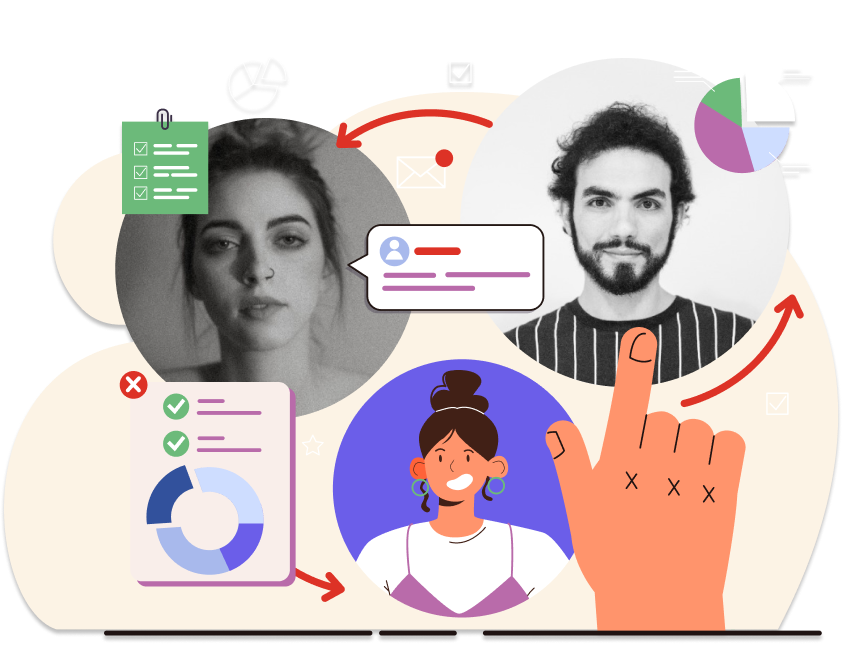HR Analytics Services
Transform Your HR Strategies with Actionable Insights
Overview
HR analytics, often called people analytics, involves collecting, analyzing, and presenting HR data. It empowers organizations to gauge the impact of HR metrics on business performance and make informed decisions. In essence, HR analytics services are a data-driven method for managing Human Resources. This approach is relatively new, with limited exploration in academic literature. A well-known definition comes from Heuvel & Bondarouk, stating HR analytics as systematically identifying and quantifying the people-related factors affecting business results.

Goals and Benefits
HR analytics services provide the below benefits to organizations:
Track key metrics like cost per
hire and quality of source to
enhance hiring strategies and
reduce turnover rates.
Analyze pay disparities, fine-tune
benefits packages, and boost
retention by aligning compensation
with employee preferences.
Utilize safety incident data to
prevent injuries, improve
employee engagement, and
enhance overall safety practices.
Leverage employee skills data to
enhance career growth
opportunities within the
organization, promoting
retention and innovation.
Use analytics to allocate
resources effectively by identifying
high-value initiatives and
streamlining recruitment spending.
Utilize HR analytics to identify
and address skills gaps, enhance
internal upskilling, and bolster
workforce performance.
The HR Analytics Cycle
The process of HR analytics services encompasses the below steps:
1. Defining the HR Agenda
Once stakeholder needs are identified, outline the HR research and analytics agenda—short or long-term, adapting to business evolution.
2. Data Source Identification
After forming the HR analytics agenda, locate data sources—public or private, within HRIS, benchmarking, think tanks, and universities.
3. Data Gathering Process
Gather data through primary research (experiments, surveys), secondary research (literature reviews), and internal HRIS data analysis.
4. Data Transformation
Transform data into valuable insights using analytical tools, though no tool can analyze the entirety of "Big Data."
5. Effective Communication
Communicate insights via storytelling, connecting data to pressing issues, avoiding bias, and ensuring ethical interpretation.
6. Strategic Enablement
Final step: Utilize HR analytics for strategy creation, data-driven decision-making, and aligning HR policies with business goals.

Let Us Help You!
We outline the steps of our HR analytics services approach as follows:
GEO Career initiates the process
by collecting diverse HR data,
including employee performance,
engagement, and recruitment metrics.
Utilizing cutting-edge analytics
tools, we delve into the data to
identify patterns, trends, and
correlations for meaningful insights.
Our experts interpret the analyzed
data, providing organizations
with valuable insights that
inform strategic decision-making.
GEO Career offers tailored
recommendations, aligning HR
strategies with business
objectives based on the
generated insights.
We assist organizations in
implementing targeted
improvements and interventions
to optimize HR operations and
employee engagement.
Continuing our partnership,
GEO Career supports organizations
in regularly refining strategies
based on evolving HR analytics,
fostering continuous
improvement and success.
Contact Us
Thanks for checking out GEO Career! Just drop us a line with your contact info, what service you need, and a quick note on how we can assist you. We look forward to hearing from you.
Frequently Asked Questions
HR analytics, also known as people analytics, involves analyzing HR data to understand its impact on business performance.
HR analytics enables organizations to measure the influence of HR metrics on business outcomes and make data-driven decisions.
HR analytics services use data-driven methods to manage Human Resources, helping organizations optimize their HR strategies.

